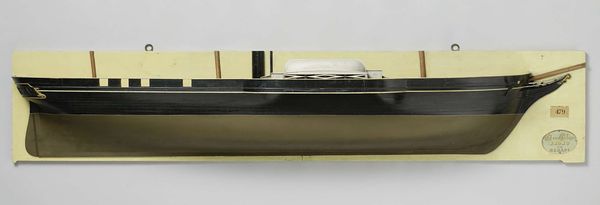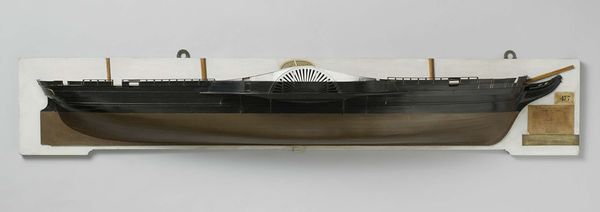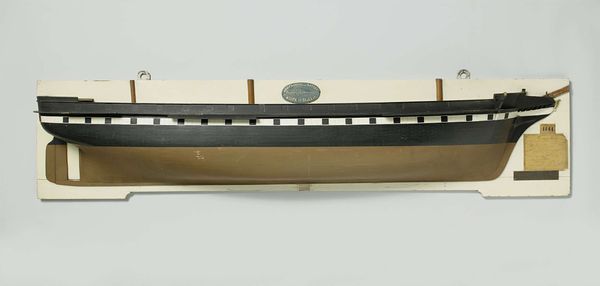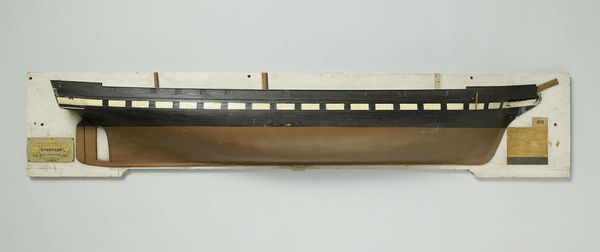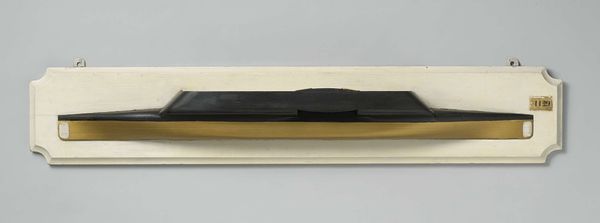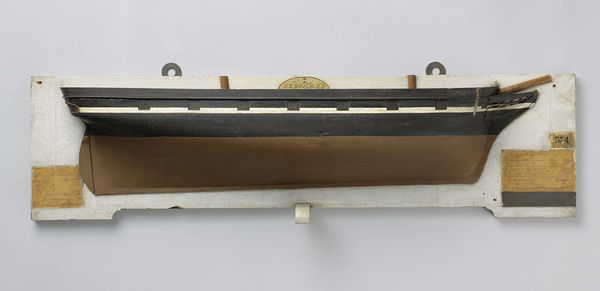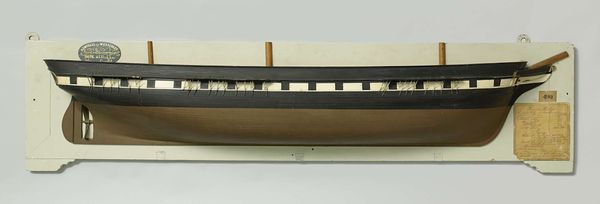
mixed-media, sculpture, wood
#
mixed-media
#
3d model
#
3d printed part
#
plastic material rendering
#
virtual 3d design
#
3d shape
#
prop product design
#
sculpture
#
metallic object render
#
3d modeling
#
wood
#
history-painting
#
mechanical engineering model
#
product render
Dimensions: height 30 cm, width 144 cm, depth 20 cm
Copyright: Rijks Museum: Open Domain
Curator: Here we have a "Half Model of a Paddle Steamer," dating back to around 1844-1848, attributed to Rijkswerf Rotterdam. What are your first thoughts? Editor: Striking! It’s smaller than I imagined but has this powerful, condensed energy, like a snapshot of a ship waiting to be unleashed. The materiality, the polished wood and the contrasting matte finish – it’s all quite tactile, even from a distance. Curator: It’s more than just aesthetics, of course. Consider its function. Half models like these weren’t artworks in the modern sense, but tools. They were instrumental in the design process, allowing builders to visualize the hull shape and assess hydrodynamic properties. They were tools, yet simultaneously objects of considerable craft. Editor: Absolutely, and the historical context is vital. Paddle steamers revolutionized maritime transport. The making of models was both practical and symbolic reflecting broader shifts in industrial technology. Who got to design them, who had access to ship building technologies and who worked where at shipyards? These were contested socio-economic arenas. Curator: The materiality also speaks to its social context. The use of mixed media, specifically wood, suggests local craftsmanship, and speaks to resource accessibility for Rijkswerf Rotterdam. Editor: Right, how the institution's labor force and available resources contributed to production and use, beyond just technical diagrams! Half models became presentation pieces later and that trajectory indicates an institutional investment in public image and technical authority. They shifted roles, becoming part of a visual language used to promote a company and its ships. Curator: And, while beautiful in their own right, viewing them through this industrial lens pushes us beyond admiring a sleek form to appreciating the process of construction, innovation, and labor it embodies. It merges aesthetic and industrial histories! Editor: Indeed. It challenges how we frame our discussions on design. Looking at this, I now see a conversation opener, not just about naval engineering of that period, but regarding the larger role museums played in forming public narratives around industrial achievements. The model served both design, industry and state ambition. Curator: Precisely, a beautiful nexus where process, form, and social context converge, adding depths to the history, as well as materiality of steam ships. Editor: This close examination reframes the entire role of such objects, linking what might seem to be niche topics—maritime technology and design display practices —to discussions of our social past.
Comments
No comments
Be the first to comment and join the conversation on the ultimate creative platform.
